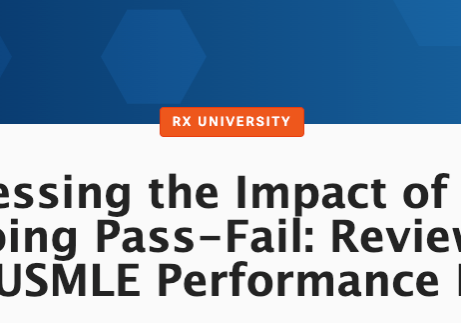By Edison Cano
A commonly asked question among US graduates and International Medical Graduates (IMGs) is what is a good score on the USMLE exams? While we all agree that higher scores are better, there are wildly differing opinions amongst friends, classmates, and various internet resources.
This question becomes harder to answer because we all come from different backgrounds and with different expectations, but as we all have different plans, time, and responsibilities, we need to tailor our work based on our own goals.
Define your goal and BEAT the MEAN
This is the first step. You need to know “what’s the weather like out there” and research past data and trends to define your target score. In the tables below, you will find the mean scores of matched applicants in 2014, which can give you an idea.
Every specialty has its own preferences, but scores way above the mean of the pool of applicants will open doors more easily. Highly competitive specialties include dermatology, radiology, and surgery, and if you are interested in these specialties, it would be worth it to make sure you’re ready the first time you sit for the exam. Once you pass a USMLE exam (even with a 192) that score will follow you throughout your application process.
How do I know I’m getting better?
There are several score predictors and simulations, but the most tested are the Self-Assessments from the National Board Medical Examination®.
Several studies have shown a good correlation among NBME® Self Assessments performance and USMLE exams yielding the best results in Standard-Paced conditions (1).
For Step 1, the Comprehensive Basic Science Self-Assessment reflected that lower scores correlated better with failure of Step 1 (2). Many schools offer this exam at the end of didactic time, and it can be used to set goals and realistic schedules/timelines. A score of 229 would mean a different plan than a score of 180 or 260+. The Comprehensive Clinical Science Self-Assessments are similar with respect to Step 2, and this has been tested in IMG participants (3). yielding similar results.
My final advice again is try to work based on your goals. If you want a competitive residency, don’t jump the gun on the exam (to get a longer vacation) until you’ve achieved your desired score in at least two simulations. Do lots of questions daily to “desensitize” the nervousness of the real exam and work on your endurance; these exams will require your full attention for several hours.
Although weird things could happen during the real exam, under normal conditions, your preparation and effort invested will be reflected in a great score, beating the mean, and helping you on the way to get your dream residency.
What’s your strategy to beat the mean? Leave your thoughts in the comments below!
References
1: Sawhill A, Butler A, Ripkey D, Swanson DB, Subhiyah R, Thelman J, Walsh W, Holtzman KZ, Angelucci K. Using the NBME self-assessments to project performance on USMLE Step 1 and Step 2: impact of test administration conditions. Acad Med. 2004 Oct;79(10 Suppl):S55-7. PubMed PMID: 15383390.
2: Morrison CA, Ross LP, Fogle T, Butler A, Miller J, Dillon GF. Relationship between performance on the NBME Comprehensive Basic Sciences Self-Assessment and USMLE Step 1 for U.S. and Canadian medical school students. Acad Med. 2010 Oct;85(10 Suppl):S98-101. doi: 10.1097/ACM.0b013e3181ed3f5c. PubMed PMID:20881715.
3: Morrison CA, Ross LP, Sample L, Butler A. Relationship Between Performance on the NBME(®) Comprehensive Clinical Science Self-Assessment and USMLE(®) Step 2 Clinical Knowledge for USMGs and IMGs. Teach Learn Med. 2014;26(4):373-8. doi:10.1080/10401334.2014.945033. PubMed PMID: 25318033.






Bewilderingly, the tables above leave out the most competitive specialties. You would make a stronger point by noting the average Step 1 scores of US seniors who matched in 2014 into neurosurgery (244), orthopedic surgery (245), otolaryngology (248), plastic surgery (245), and radiation oncology (241), in addition to the already noted diagnostic radiology (241) and dermatology (247).
Thanks, Francis, for the input. This post was intended for the most common specialties and IMGs as you might notice in the last two columns of each table, but thanks anyway for adding up the scores. Best.